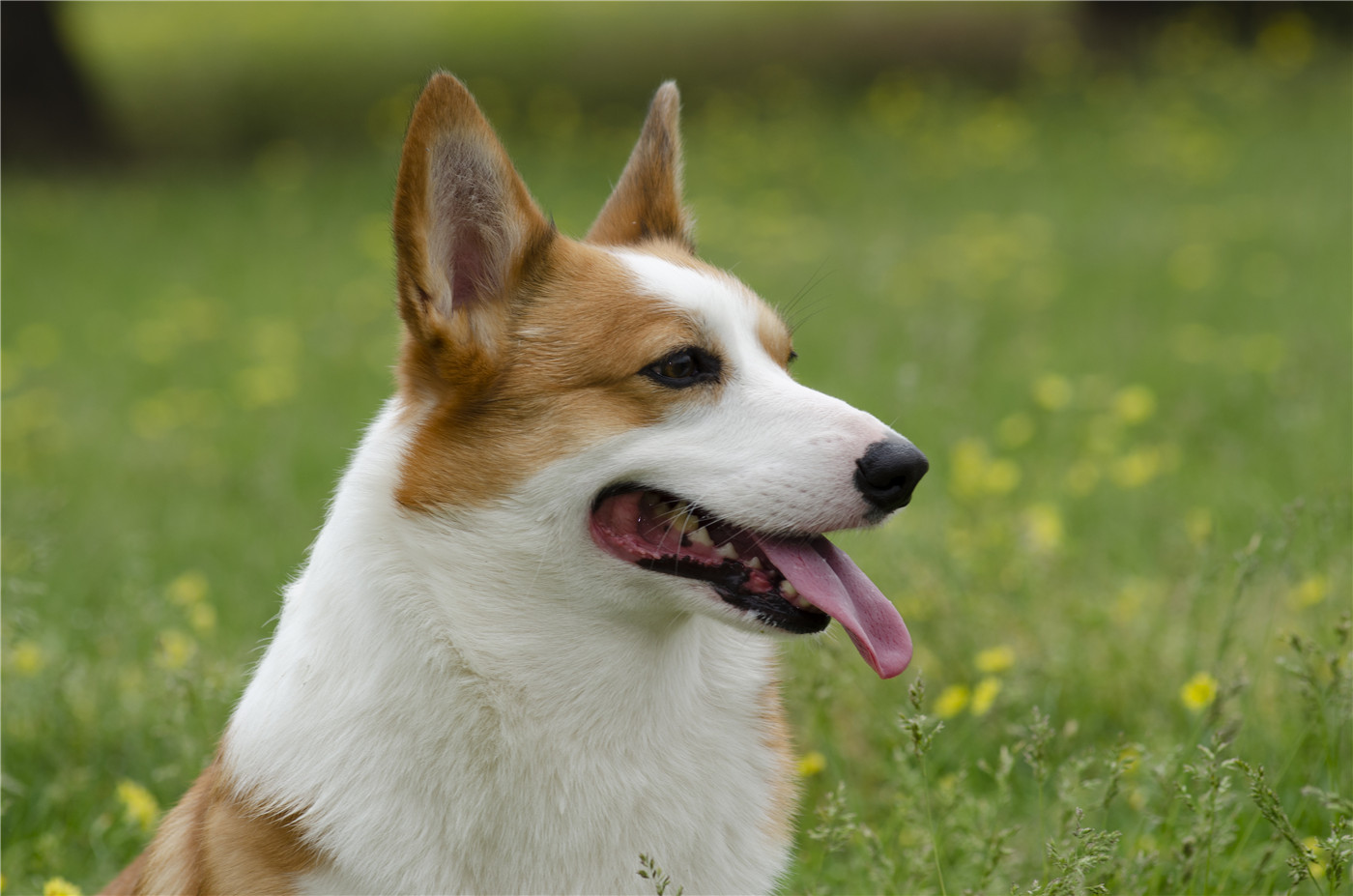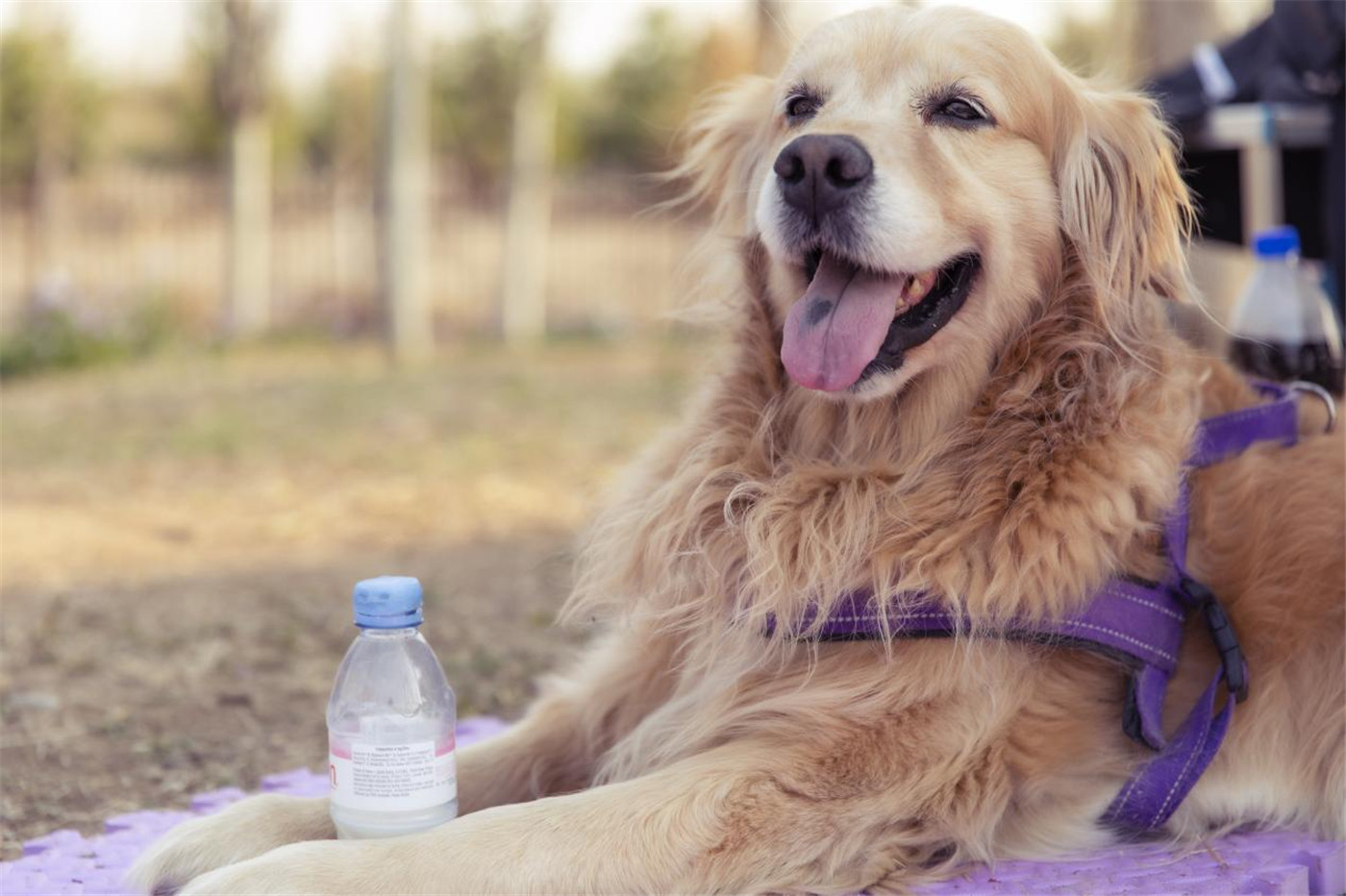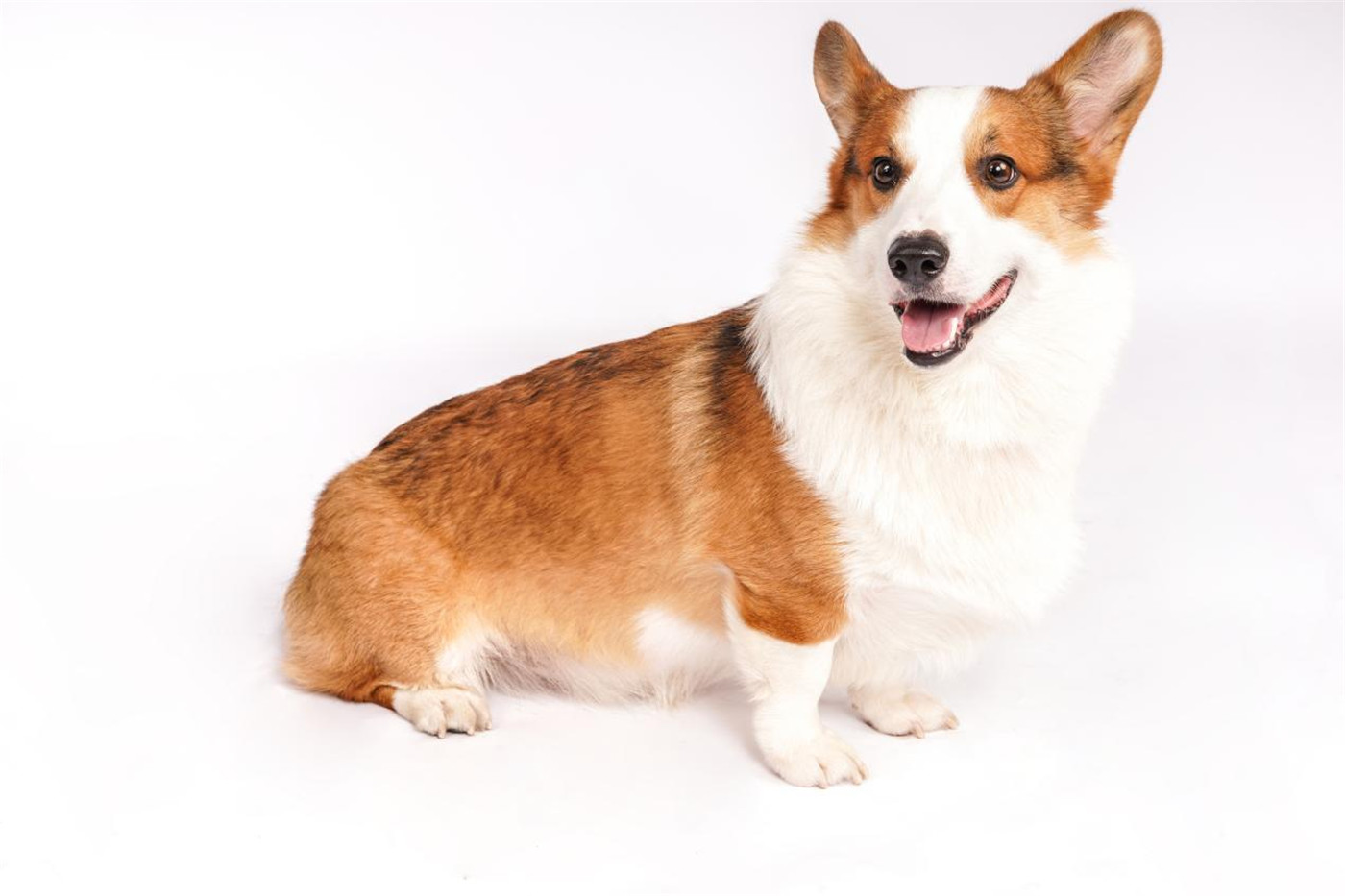Table of contents
Preparation
Remember basic training principles
teach a dog to follow you
teach the dog to come
Teaching a Dog to "Listen"
teach a dog to sit
teach a dog to lie down
Teach your dog to wait by the door
Teaching Dogs Good Eating Habits
Teaching Dogs to Hold and Release
teach a dog to stand up
teach a dog to talk
crate training
Hint

Precautions
Are you considering getting a dog? Do you want your dog to behave well? Do you want your dog to be well trained, not out of control? Taking specialized pet training classes is your best bet, but it can be expensive. There are many ways to train a dog, and you'll want to find the one that works best for your dog. This article might give you a good start.
method 1
Preparation
1. First of all, choose a dog according to your living habits.
After centuries of breeding, dogs are now arguably one of the most diverse species. Every dog has a different personality, and not all dogs will be right for you. If you have a dog for relaxation, never choose a Jack Russell Terrier. It is extremely energetic and barks non-stop all day long. If you want to cuddle up on the sofa all day, a bulldog is a better choice. Do some research before getting a dog, and get a little opinion from other dog lovers.
Since most dogs live 10-15 years, getting a dog is a long-term plan. Be sure to choose a dog that is right for you.
If you don't have a family yet, think about whether you plan to have children in the next ten years. Some dogs are not suitable for families with young children.
2. Don't be impulsive when raising a dog.
Choose a dog according to your actual situation. Never choose a dog that needs a lot of exercise just because you want to force yourself to start a healthy life. If you can't keep exercising with your dog, you and the dog will have a hard time.
Take note of the habits and basic conditions of the dog you are going to have to see if it is right for you.
If the dog you want will cause a drastic change in your living habits, it is recommended to choose another breed.
3. In order for the dog to easily remember its name and concentrate on training, it should be given a clear and loud name, generally no more than two syllables.

In this way, the dog can distinguish its name from the owner's words.
Call him by name as often as you can while playing, playing, training, or whenever you need to get his attention.
If your dog looks at you when you call it by his name, then he has remembered the name.
Actively encourage or reward him when he responds to his name so he will continue to answer your call.
4. Dogs, like children, have short attention spans and get bored easily.
Therefore, training should be done several times a day, 15-20 minutes at a time, to develop good training habits.
The training of the dog should run through every minute you get along with it, not just limited to the fixed training time every day. Because it is learning from you every moment it communicates with you.
Not only should the dog understand the content learned during training, but also let it remember and implement it in life. So keep an eye on your dog outside of training time.
5. Be mentally prepared.
When training your dog, keep a calm and sensible attitude. Any restlessness or restlessness you show will affect the training effect. Remember, the purpose of training a dog is to reinforce good habits and punish bad ones. In fact, raising a well-trained dog takes a certain amount of determination and faith.
6. Prepare the dog training equipment.
A leather rope of about two meters with a collar or strap is the entry-level equipment. You can also consult a professional dog trainer to see what kind of equipment is suitable for your dog. Puppies don't need too many things, but older dogs may need a leash such as a collar for a certain period of time to focus their attention.
Method 2
Remember basic training principles
1. Training is not always smooth sailing, don't be discouraged in the face of setbacks, and don't blame your dog.
Encourage them more to enhance your confidence and ability to learn. If the owner's mood is relatively stable, the dog's mood will also be stable.
If you are emotionally excited, the dog will be afraid of you. It will become cautious and stop trusting you. As a result, it is difficult to learn new things.
Professional dog training courses and teachers will guide you to get along better with your dog, which will help the dog's training results.
2. Just like children, different dogs have different tempers.
Different breeds of dogs learn things at different rates and in different ways. Some dogs are more stubborn and will fight against you everywhere. Some dogs are very docile and try to please their owners. So different dogs require different learning methods.
3. Rewards must be timely.
Dogs are very simple, and over a long time span, they can't figure out the cause and effect relationship. If your dog obeys the command, you must praise or reward it within two seconds, thus consolidating the training results. Once this time has elapsed, it cannot associate your reward with its previous performance.
Again, rewards must be timely and accurate. Don't let your dog associate the reward with other wrong behaviors.
For example, if you are teaching your dog to "sit." It may indeed sit down, but it may have stood up when you rewarded it. At this time, it will feel that you rewarded it because it stood up, not sitting down.
4. Dog training clickers are special sounds for dog training. Compared with rewards such as food or touching the head, the sound of dog training clickers is more timely and more suitable for the dog's learning speed.
Whenever the owner presses the dog training clicker, he needs to give the dog a substantial reward. Over time, the dog will naturally associate the sound with the reward. So any command you give to the dog can be used with the clicker.
Be sure to reward the dog in time after clicking the clicker. After a few times, the sound and the reward can be associated, so that the dog can hear the sound of the clicker and understand that his behavior is right.
When the dog does the right thing, you press the clicker and give the reward. When the dog makes the same action next time, you can add instructions and repeat the exercise. Use clickers to link commands and actions.
For example, when your dog sits, press the clicker before giving the reward. When it's time to sit down again for the reward, guide it by saying "sit down." Press the clicker again to encourage her. Over time, it will learn that sitting when it hears "sit down" will be encouraged by the clicker.
5. Avoid external interference for dogs.
You want to involve the people you live with in the dog's training. For example, if you teach your dog not to jump on people and your child allows him to do so, all your training will be wasted.
Make sure the people your dog comes into contact with use the same passwords you teach them. It doesn't speak Chinese and doesn't know the difference between "sitting" and "sitting down". So it might not understand if you use these two words interchangeably.
If the passwords are inconsistent, the dog will not be able to accurately associate a certain behavior with a certain password, which will affect the training results.
6. Rewards should be given for obeying instructions correctly, but the rewards should not be too large. A small amount of delicious and easy-to-chew food is enough.
Don't allow it to satiate too easily or spend a long time chewing food to interfere with training.
Choose foods with a short chewing time. A dab of food the size of an eraser on the tip of a pencil should suffice. It can be rewarded without spending time waiting for it to finish eating.
7. The reward should be set according to the difficulty of the action.
For more difficult or more important instructions, the reward can be increased appropriately. Pork liver slices, chicken breast or turkey slices are all good choices.
After the dog learns to command, it is necessary to gradually reduce the big reward of meat to facilitate subsequent training. But don't forget to praise your dog.
8. Do not feed the dog a few hours before training.
Hunger helps to increase its desire for food, and the hungrier it is, the more focused it will be on completing tasks.
9. Every training must have a good ending, no matter how the dog's training is.
At the end of the training, choose some commands that it has already mastered, and you can take the opportunity to praise and encourage it, so that it only remembers your love and praise every time.
10. If your dog barks non-stop and you want him to stop being loud, just ignore him and wait until he is quiet before praising him.
Sometimes a dog barks to get your attention, and sometimes barking is the only way a dog can express itself.
When your dog barks, don't gag it with a toy or ball. This will only make it feel that as long as it barks, it can get what it wants.
Method 3
teach a dog to follow you
1. For the physical and mental health of the dog, remember to put it on a leash when you take it out for a walk.
Different dogs require different amounts of exercise. Regular exercise should be arranged according to the situation to keep the dog happy and healthy.
2. The dog may walk around with the chain stretched at first.
As it lunges forward, stand still until it comes back to you and keeps its attention on you.
3. Another more effective way is to go in the opposite direction.
This way he has to follow you, and once the dog is in step with you, praise and reward him.
4. The dog's nature will always force it to explore and discover new things around it.
What you have to do is make it feel more interesting to follow you. Use your voice to attract its attention when changing directions, and praise it generously once it follows you.
5. After the dog keeps following you, you can add commands such as "follow closely" or "walk".
Method 4
teach the dog to come
1. The password "come here" is very important, it can be used whenever you want the dog to come back to you.
This can be life-threatening, such as being able to call your dog back if it runs away.
2. In order to reduce interference, dog training is generally carried out indoors, or in your own yard.
Put a leash around two meters on the dog, so you can focus his attention and prevent him from getting lost.
3. First of all, you have to attract the dog's attention and let it run towards you.
You can use anything your dog likes, such as a barking toy, etc., or even open your hands to it. You can also run for a short distance and then stop, and the dog may run after you by itself.
Praise or act happy to encourage the dog to run towards you.
4. Once the dog runs in front of you, press the clicker in time, praise it happily and give it a reward.
5. As before, add the "come" command after the dog consciously runs towards you.
When it can respond to the instructions, praise it and reinforce the instructions.
6. After the dog learns the password, transfer the training site from home to a public place where it is easier to be distracted, such as a park.
Because this password may save the dog's life, it must learn to obey it in any situation.
7. Increase the length of the chain to allow the dog to run back from a longer distance.
8. Try not to train with chains, but do it in a closed place.
This increases the recall distance.
You can have companions join you in training. You and him stand in different places, take turns shouting the password, and let the dog run back and forth between the two of you.
9. Because the password "come here" is very important, the reward for completing it should be the most generous.
Make the "come over" part of the training your dog's very first moment.
10. Don't let the command "come here" be associated with any negative emotions.
No matter how upset you are, never get angry when you say "come here." Even if your dog breaks off the leash and wanders off for five minutes, be sure to praise him if he responds to you when you say "come here." Because what you praise is always the last thing it does, and the last thing it does at this time is to run towards you.
Don't criticize it after it runs to you, get mad at it, etc. Because one bad experience can undo years of training.
Don't do things to your dog that it doesn't like after saying "come here", such as bathing it, cutting its nails, picking its ears, etc. "Come here" must be associated with something pleasant.
So don’t give instructions when doing something the dog doesn’t like, just walk up to the dog and grab it. When the dog cooperates with you to complete these things it does not like, remember to praise and even reward it.
11. If the dog is completely disobedient after breaking off the leash, then start training "come" again until it is firmly in control.
This instruction is very important, take your time, don't rush.
12. This password should be continuously consolidated throughout the dog's life.
If you take your dog for an off-leash walk, keep a little treat in your bag so you can repeat this command during your usual walks.
You also need to teach it a free activity password, such as "go play" and the like. Let it know that it can do what it wants without being around you until you give it new instructions.
13. Let the dog feel that it is a very pleasant thing to be with you, instead of putting on a chain and doing things he doesn't want to do as long as he is with you.
Over time, the dog will become less and less willing to respond to your "coming". So bark the dog every now and then, praise him, and let him "go play."
14. Let the dog get used to being held by the collar.
Every time it walks up to you, you subconsciously grab its collar. That way it won't make a fuss if you suddenly grab its collar.
When you bend over to reward him for "coming," remember to hold him by the collar as well before offering him the treat. [6]
Attach the chain occasionally when grabbing the collar, but not every time.
Of course, you can also tie it up for a while and then let it go free. The chain must be associated with pleasant things, such as going out to play and the like. Can not have any connection with unpleasant things.

Method 5
Teaching a Dog to "Listen"
1. "Listen!" or "Look!" should be the first command a dog learns.
This command is to let the dog focus so that you can implement the next command. Some people will directly replace "listen" with the dog's name. This method is especially suitable for situations where there is more than one dog. In this way, each dog can hear clearly who the owner is giving instructions to.
2. Prepare a handful of food.
It could be dog food or bread cubes. It is best to choose according to your dog's preferences.
3. Stand beside the dog, but don't play with it.
If your dog sees you full of joy, stand still and ignore him until he calms down.
4. Say "listen," "look," or call the dog's name in a calm but firm voice, as if you were calling someone's name to get their attention.
5. Do not deliberately raise the volume to attract the dog's attention, only do so when the dog escapes from the cage or breaks off the dog chain.
If you never yell at it, it will only become aware in an emergency. But if you keep yelling at it, the dog will get used to it and will not be able to bark it when it really needs its attention.
Dogs have excellent hearing, far better than humans. You can try calling your dog as softly as possible and see how it responds. So that in the end you can give commands to the dog almost quietly.
6. The dog must be rewarded in time after completing the command well.
Usually it will look at you after it stops moving. If you use the clicker, press the clicker first and then praise or award
Post time: Nov-11-2023









